My experimental woodcuts this week are inspired by the wonderful Chinese woodblock printed, Materia Medica printed in 1249 in the Song Dynasty, from the collection of the Library of Congress.
Jingshi zhenglei beiji bencao
Below “Preparing salt”: Two beautiful and finely cut plates describing the all important and state controlled harvesting of salt.

Bencao (Book on Chinese Herbal Medicine), compiled by Tang Shenwei of the Song dynasty and printed in Bingyang, Shansi, in A.D. 1249.
Chinese medical books appeared before the Qin period (221-206 BC). Constantly revised and added to, by the time this version was compiled the number of medical herbs detailed were well over a thousand.”
You can access the book online here.
Originally comprised of 30 juan, (a juan being roughly a “part” or “chapter”) this copy is missing almost one half of the original content at just 13 juan, bound in 10 volumes. But this is more than enough to provide me with a fascinating exploration of the visual style of woodcuts from this time.
The text and images detail remedies involving, jade, stones, grass, wood, humans, animals, birds, insects, fish, fruits, grains, and vegetables and these comforting volumes continued being popular for several hundred years.
The whole subject of these early Materia Medica is very very complex with many strange and sometimes uncomfortable ideas of what might or might not cure various ailments. The illustrations were generally drawn with brush and ink from observation by local experts in pharmacy then slightly simplified for wood cutting/printing. They were sometimes copied from earlier sources or ; “In the case of items imported from abroad, foreign merchants were to be questioned, and one or two samples of each item were to be obtained and taken by courier to the capital to be drawn.”
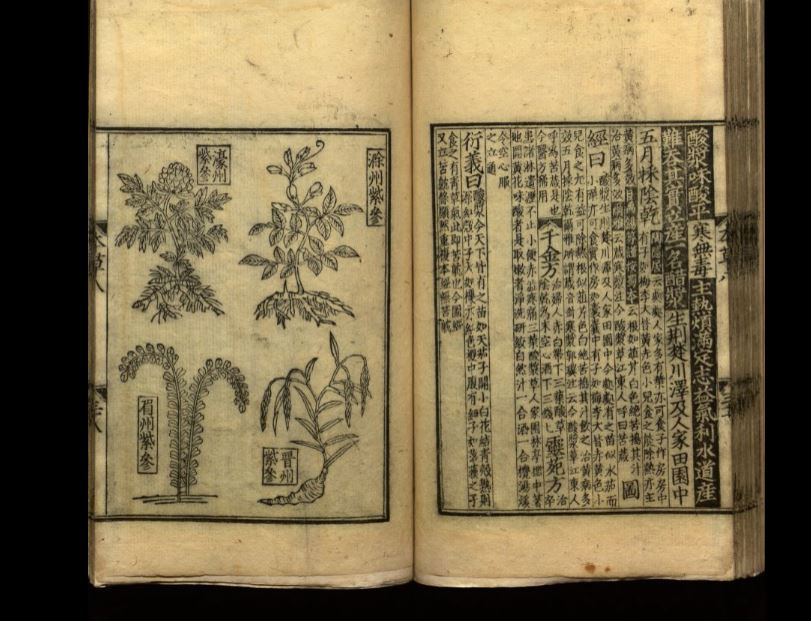
Mostly the woodcuts depict various plants which I am going to return to later when I look at other early herbals but I wanted to cut a simple landscape block to try again to emulate a brush and ink drawing.
I found the characteristic thick and thin lines very tricky to make and the chippy plywood is not really the best material to try.
It has made me even more admiring of the fine cutting skills of these early craftsmen.
![]()
Weekly Woodcut No 7: Land, Sea and Frogs
A Rocky Landscape, a tiny bit of Choppy Sea and some Frogs.
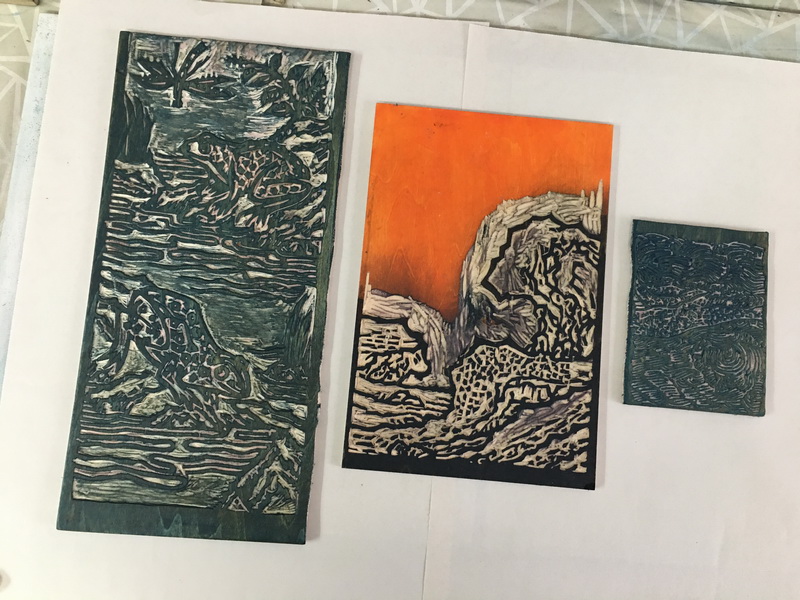
The three blocks. the largest is about 12 x 4.5 inches
Cutting these has been a challenge and yet the images look so simple! Normally I don’t cut “outlines” which involves cutting either side of the line and all around spots, all of which have to remain raised in order to be printed. Then clearing the gaps in between to avoid the chatter was a pain and very time consuming.
I did stabilise the blocks slightly with some nori paste which helped the chipping and it’s possible to varnish them if printing with oil based inks but this shina ply varies so much from piece to piece and even on the same block that I have decided not to try any fine cutting on them in the future. The original wood might well have been pear wood and so I’m going to find some to try.
However, I do quite like some of what I managed to produce, despite the chipped gaps!
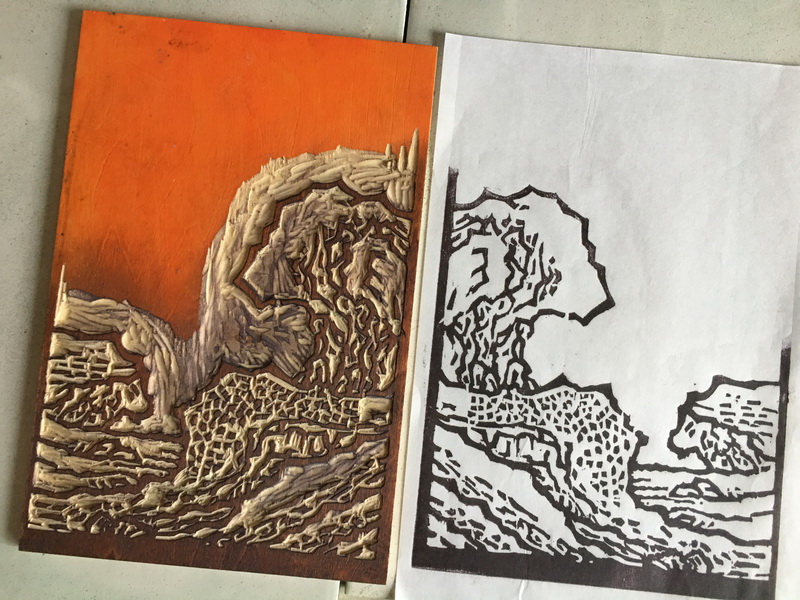
Rocky Landscape from the “Bencao” Block and first proof.
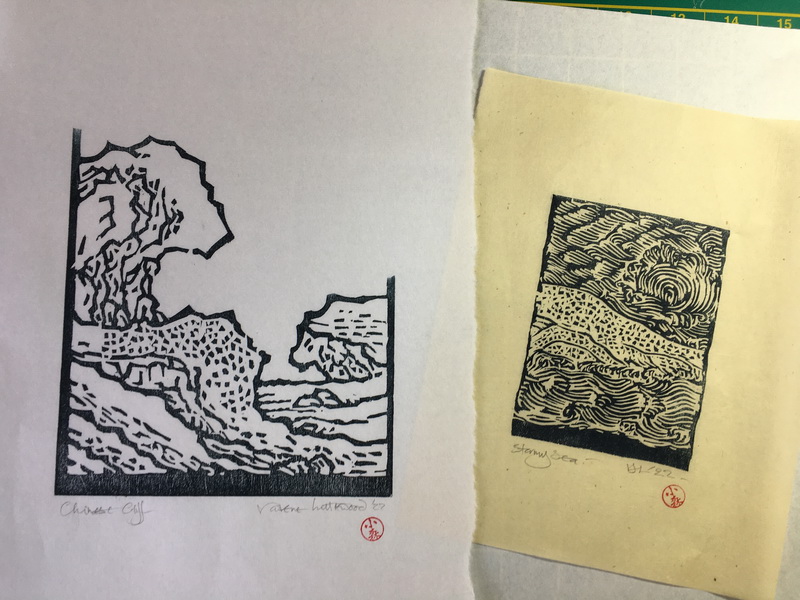
Rocky Landscape and a first print of the Choppy Sea. I think the Rocky print has probably turned out to be the most successful in trying to cut the block in the traditional way.
More Choppy Sea. This block was way too small, at just 3.5 x 4.5 inches, for fine cutting using this ply… but a lesson learnt ie; scale up the marks to suit the wood
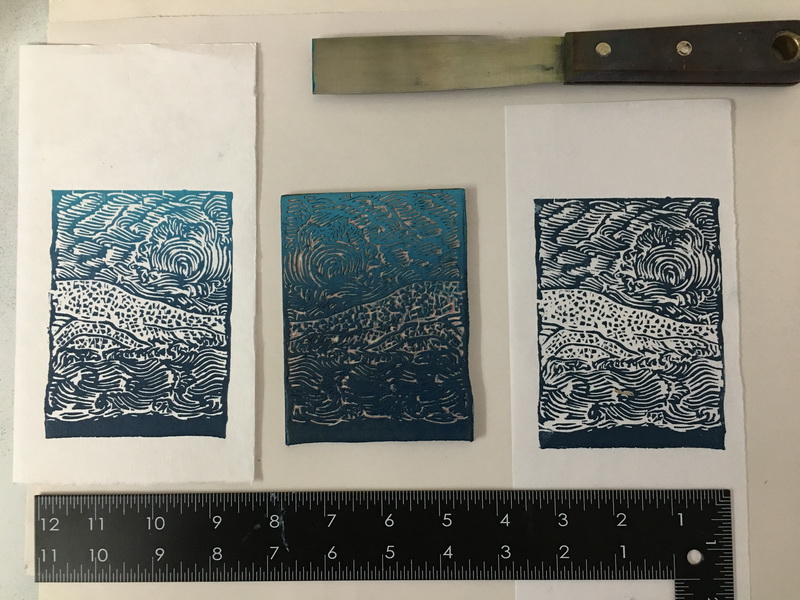
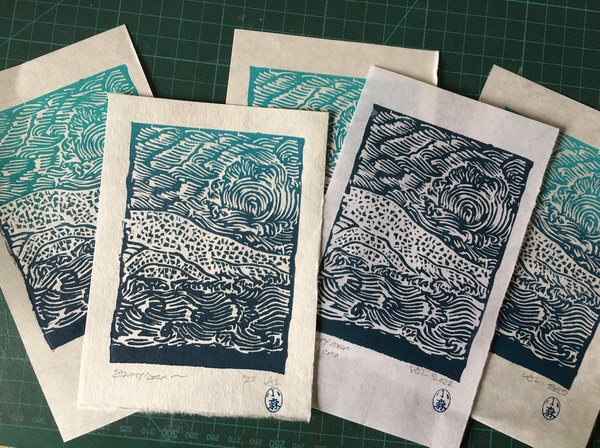
Choppy Seas: A variety of papers and rainbow rolls
With the weather picking up here I was delighted to see the frogs back in the pond. So for some more cutting practice I adapted one of the plates from the book replacing, what I was pretty sure were toads, with two frogs.
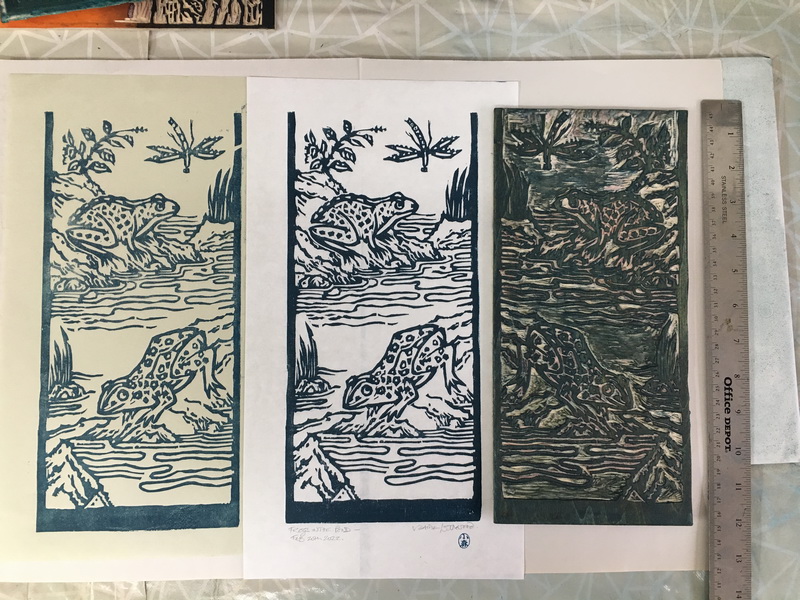
Frogs: Block and 2 prints.
As a finishing touch I added light yellow to the little froggy eyes and some faint moon shapes, (it was the full “Snow” moon here on the 16th Feb). We can hear the frogs gentle musical purring at night and I think they must have arrived with that full moon.
One is printed on Japanese Hosho paper and the other on a beautiful greeny Japanese Kitikata paper
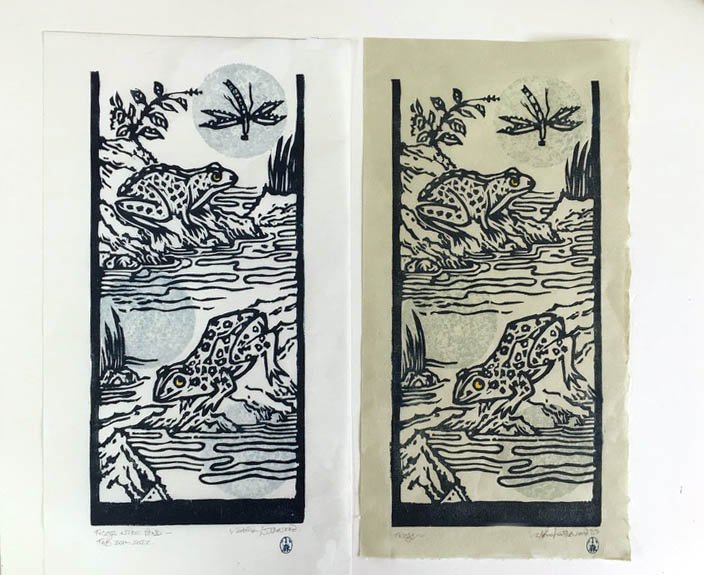
Frogs and Three Moons
In all it’s been a useful experiment but I probably won’t be doing much work in this style. Well, useful for practicing patience if nothing else. I should have liked the lines to be thinner but risked losing them all to chipping.
The prints do remind me a bit of colouring books and I have to resist the urge to get some nice crayons and carefully fill in between the lines. Colouring book? Hmm …what’s not to love!
PS .. I like to mark the return of the frogs…. see here and here.





